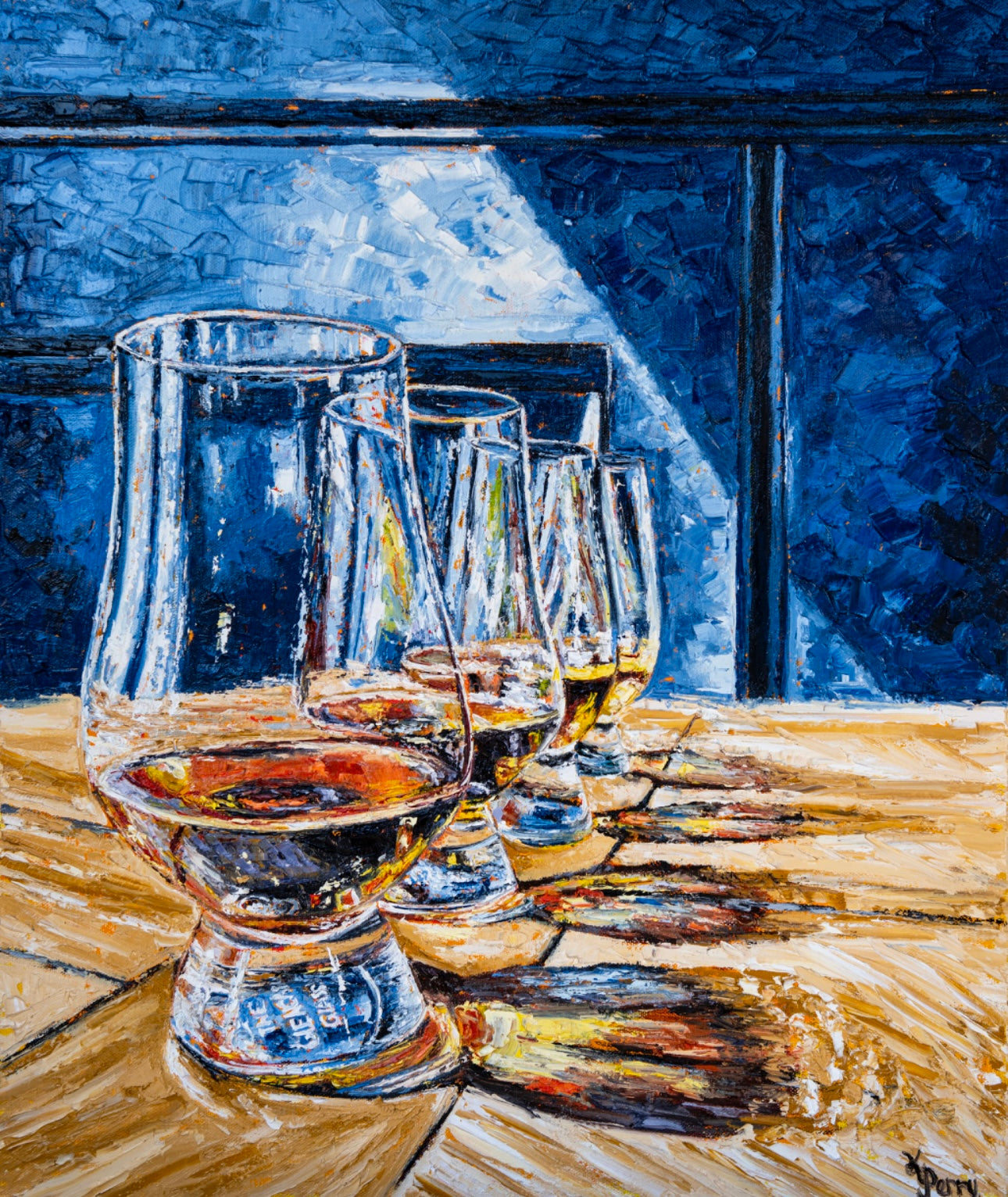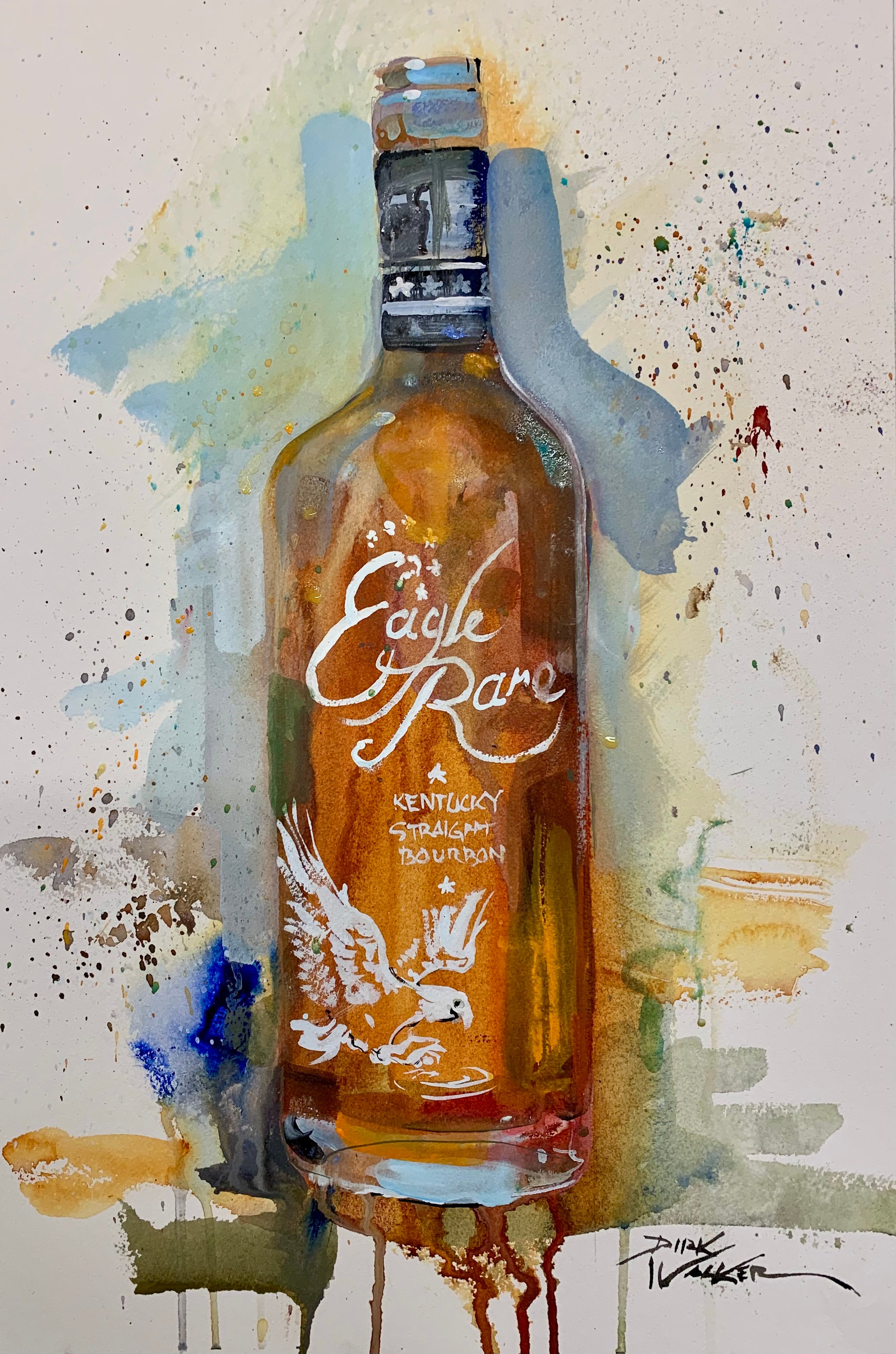Unveiling the Charm of Bourbon Art: A Homage to Craft Distillers
Unveiling the Charm of Bourbon Art: A Homage to Craft Distillers
Blog Article
The Value of Whiskey Art in Celebrating Heritage and Craftsmanship in the Beverage Sector
The complex relationship in between whiskey art and the celebration of heritage and craftsmanship within the beverage market can not be overstated. With thoughtfully created containers and tags, whiskey brand names envelop their historic roots and the artisanal abilities that specify their manufacturing techniques.
The Historical Roots of Whiskey
At the heart of bourbon's appeal lies a rich tapestry of historical roots that map back to ancient human beings. The origins of scotch can be linked to the distillation methods of the Sumerians and Babylonians around 2000 BCE, where early kinds of fermented grain beverages started to emerge. Nevertheless, it remained in the Middle Ages that the art of purification advanced considerably, specifically in Ireland and Scotland, causing the production of whiskey as we understand it today.
The term "scotch" itself stems from the Gaelic word "uisce beatha," suggesting "water of life." This expression underscores the cultural relevance of whiskey in Celtic societies, where it was usually connected with rituals, celebrations, and common bonding. By the 15th century, distillation ended up being an identified craft within reclusive neighborhoods, leading the way for the establishment of lawful distilleries.
As profession paths expanded, scotch's appeal expanded, going beyond local borders and catching the rate of interest of lovers worldwide. Bourbon Art. This historic journey shows not only the craftsmanship behind scotch manufacturing yet likewise its integral role in social and social contexts, marking it as a considerable beverage throughout background
Artistic Expression in Branding
Scotch branding stands as an engaging junction of virtuosity and commerce, where aesthetic identity plays an important function in shaping customer assumption. The appearances of whiskey tags, packaging, and advertising and marketing products reflect not just the brand name's story yet likewise its core worths and heritage. Via artistic expression, distilleries communicate a narrative that reverberates with customers, evoking feelings and sparking links.
The use of color, typography, and imagery in branding serves to separate products in a saturated market. For instance, standard concepts might stimulate a sense of credibility and workmanship, while modern-day styles can indicate advancement and forward-thinking. This calculated imaginative instructions boosts brand name acknowledgment and loyalty, enabling customers to build a personal connection with the scotch they pick.
Furthermore, imaginative expression in branding commonly functions as an event of local heritage. Distilleries regularly include regional signs or historical references into their designs, developing a local color that invites consumers to take part in a more comprehensive social experience. Eventually, the virtuosity behind bourbon branding not just improves visual charm but also improves the total story of the brand, promoting a deeper appreciation for the craftsmanship and heritage embedded in each container.
Workmanship in Bottle Style
The creativity obvious in whiskey branding extends beyond visual identity to include the workmanship involved in bottle style. Each container serves as a vessel not just for the spirit within, yet also for the tale it informs about its beginning, quality, and custom. The style procedure needs thorough attention to detail, as components such as closure, material, and shape add considerably to the total perception of the scotch.
Workmanship in bottle design includes picking top notch glass that can improve the bourbon's color and clarity, while likewise providing a tactile experience for the customer. The silhouette of the container should be both visually appealing and functional, typically mirroring the heritage of the brand name. Several distilleries opt for distinct shapes or printed logos that evoke a feeling of credibility and background.
Additionally, the tag layout and typography play a critical duty in interacting the brand's story. Realism Art. A well-crafted container not just mesmerizes the consumer's eye but additionally reinforces the brand name's dedication to high quality and tradition. By doing this, the workmanship of bottle style ends up being a vital aspect of the go to this web-site bourbon experience, merging artistry with an extensive regard for heritage
Cultural Importance of Bourbon Art
Celebrating practice and craftsmanship, the cultural relevance of scotch art goes beyond plain looks, linking with the historical and social stories of the areas from which it comes from. Each container acts as a canvas, illustrating the one-of-a-kind tales, folklore, and customs that have actually shaped regional whiskey-making techniques. The intricate designs commonly show the heritage of the distillers, including symbols and concepts that resonate with the culture and values of their neighborhoods.

Additionally, bourbon art plays a crucial role in communal gatherings and celebrations, working as a concrete link in between people and their shared experiences. By valuing the virtuosity in bourbon product packaging, consumers cultivate a much deeper understanding and respect for the craft, eventually improving their enjoyment of the drink itself.
Modern Trends in Whiskey Presentation
Recently, the discussion of whiskey has actually evolved to reflect contemporary preferences and patterns while still recognizing conventional workmanship - Limited Edition. Distilleries are significantly concentrating on visual elements that boost the total alcohol consumption experience, bridging the gap in between heritage and modernity
Ingenious bottle layouts have actually emerged, commonly incorporating lasting materials and artistic tags that inform engaging tales. Several brand names currently work together with regional musicians, infusing their products with one-of-a-kind aesthetic expressions that resonate with customers. In addition, limited-edition launches are usually packaged in collectible containers, adding worth and charm for aficionados.

Final Thought
In conclusion, whiskey art offers as an important conduit for revealing the heritage and craftsmanship integral in the beverage industry. Via complex branding, cutting-edge container layouts, and culturally look at here considerable imaginative aspects, whiskey brands efficiently recognize their traditions and link with consumers.


Workmanship in container design entails selecting high-quality glass that can improve the whiskey's color and clarity, while also giving a responsive experience for the consumer. In this method, the craftsmanship of bottle design comes to be a vital aspect of the whiskey experience, combining creativity with an extensive respect for heritage.
In final thought, whiskey art offers as a crucial avenue for expressing the heritage and craftsmanship fundamental in the beverage sector.
Report this page